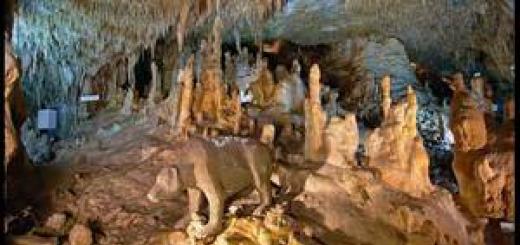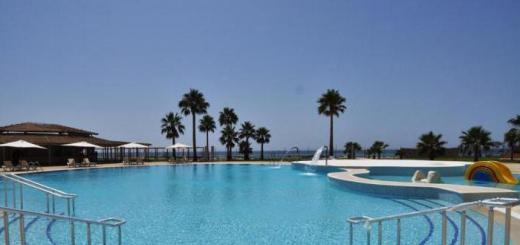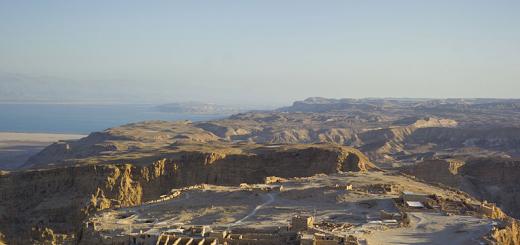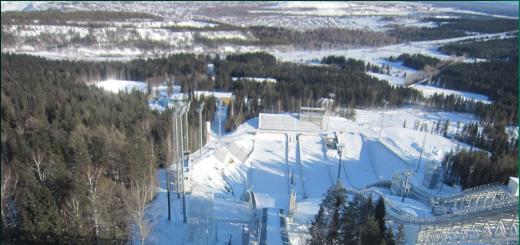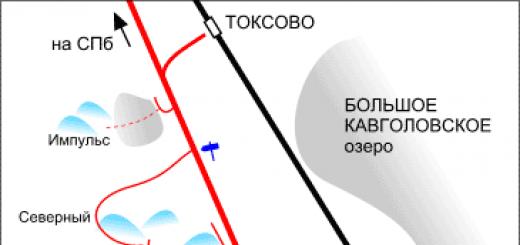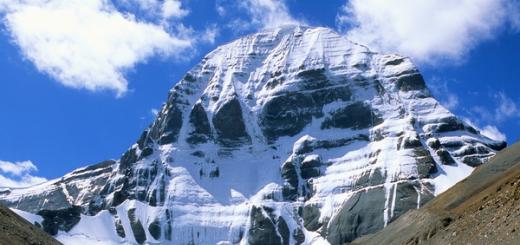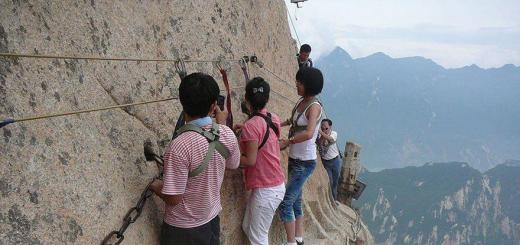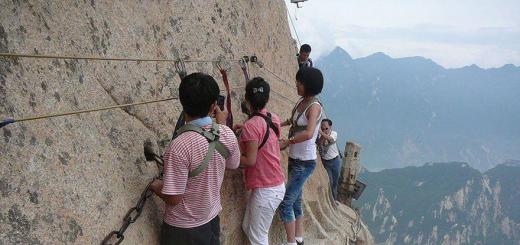Village Tazbichi Itum- Kalinsky district located in three kilometers To east from regional center, on the the most alpine in Chechnya road Itum- Calais - Sharoy... This isperfect a place for shorter walks from upper Arghun in neighboring, lateral gorge... TOak and described settlement, ittoo called Tazbichi... A story about him will go in two parts: first we will get there, and then - just as slowly - we will walk.)
Get there here from Grozny simply and not for long. Whether you are hitchhiking, taxi, bus or minibus, the shortest road will run through the Argun Gorge, which stretches for almost 120 kilometers along the Argun River - from the Bear Cross Pass (Datvis Jvari) in northeastern Georgia to the Black Mountains and the Chechen Plain ...
Along with Daryal, the route from Russia to Transcaucasia and Asia Minor passed through the Argun Gorge; from ancient times it was the most important transit road from Chechnya to Georgia, Dagestan and Ossetia. The times when it was possible to walk through the entire gorge are a thing of the past together with the USSR, and then with “independent Ichkeria”. In December 1999, the Russian military blocked the Chechen sector state border... Open checkpoints, even for local residents, here in the foreseeable future are not going to.
On Argun you can see and natural beauty Chechnya and mountainous Georgia, and many surviving monuments ancient architecture Vainakhs and Khevsurs, and traces of two Chechen wars. Of the documents, you only need to have an internal Russian passport for Chechnya (if your route does not include a border zone south of the Itum-Kale regional center) and a foreign passport for Georgia. The journey along the gorge will have to be divided into two parts - the Chechen and Georgian.
With Grozny bus station "Minutka"(not far from the square with the same name) buses and minibuses go to the village of Shatoi on the northern outskirts of the Argun Gorge. To the village of Itum-Kale - the southernmost regional center of Chechnya - the only minibus per day leaves at about noon .
2.
From Grozny, approximately to the village of Varanda, the route goes along the plain. In the village of Starye Atagi, the mountains are just beginning to approach, in Varandy it already seems that you can reach them with your hand, and further, somewhere in the Shatoi region, you will find yourself among the peaks overgrown with forest, over an abyss with a seething river.
3.
In the vicinity of the village Yaryshmards(outside the village of Chishki) on the side of the road there is a wooden Orthodox cross one and a half human height, at the foot of the cross lies a bullet-through soldier's helmet. At this point, on April 16, 1996, the "black Arab" Khattab destroyed a column of the 245th motorized rifle regiment of the Russian army, killing about 100 people.
4.
Photo of 2007.
At the entrance to the regional center Shatoi, fifty kilometers from the Chechen capital, there is a 22-meter battle tower with a pyramidal-stepped roof characteristic of the Vainakhs and mashikuli - balconies for shooting. You can get to it by making a detour across the entire Shatoi, moving to the opposite bank of the Argun and turning onto a dirt road towards the village of Bolshiye Varandy. Inside the tower, the stairs and floors have been restored, so ... well, you get the idea. ;-)
5.
6.
7.
8.
On the northern outskirts of the village Ushkalo, in the narrowest part of the gorge, the traveler will be greeted by two watchtowers, as if soldered into a rocky niche. The towers were built in the XIV-XVI centuries, and in 1944 one of them (the one on the left) was destroyed. The second was badly damaged during the shelling in the Second Chechen, but one and a half to two years ago it was restored, and the first was generally rebuilt.
Each of them has only three walls, the fourth is rock (in photo 10 - on the left side).
10.
Photo welran
From the road through the river is strong pedestrian bridge, along which it is possible to reach the towers.
11.
12.
Photo welran
At the entrance to Itum-Kale, 75 kilometers from Grozny, the mountains diverge again, giving way to people a small valley. The main street in the village is named after Magomed Uzuev - itum-kalinets, the hero of the defense of the Brest fortress. The houses are entirely private, mostly made of red brick, all new. The former, locals say, were bombed during the war.
13.
14.
15.
These are the tops of the chimneys made of painted sheet metal. Tin jewelry is one of the characteristic features any Chechen or Ingush house, because every owner wants his dwelling to be elegant.
In the south, the most ancient outskirts Itum-Kale is a mosque and a small medieval Pakoch castle... In August 2007, when I came here for the first time, the military left the fortress quite recently, leaving here and there brickwork for firing points, rotten sandbags and rusty prickly wire.
16.
The battle tower next door was dilapidated from time and from war.
17.

A couple of years ago, perfectionist restorers gave the but the lobe is almost European gloss, and along the way, the mosque was rebuilt beyond recognition.)) Now they look stern and at the same time dandy:
18.
Now the castle houses a very pleasant museum of local lore named after Khusein Isaev - a famous countryman, associate of Akhmat Kadyrov, who died with him in an explosion at the Dynamo stadium in Grozny on May 9, 2004 of the year.
19.
20.
Have castle museumwill be fork... D orog straight through bridge to the right of the tower, will lead in village Veduchi (8 km, there is pointer), where with Martha 2012 of the year goes building ski complex... Dorog to the left, between the hives and the house with a green roof, goes into Tazbichi and Sharoy... Yes, we're almost there!
21.
( By the way, from photos 17, 19 and 21, it is clearly visible that the tower next to the castle also experienced a rebirth - decades or even centuries later, it was completed with the top. In the masonry, ancient stones that have darkened with time and light gray new ones are bizarrely combined ... It's like a family reunion after a long time apart.)
Mobile connection. Starting from the village of Ushkaloi, Itum-Kalinsky district, the signal on Moscow SIM cards is lost. In Ushkaloe and Itum-Kale, only Chechen sim cards are caught, and after the Khacharoi outpost (where the border zone begins) mobile communications not at all.
Photo sketches from a trip to the mountains of the Itum-Kalinsky region of Chechnya, the southernmost in the republic and rich in historical and natural monuments. In an ordinary car, prior with the Ingush flag), with license plates near Moscow, we visited the construction site of the Veduchi ski resort; drove almost to the border with Georgia, to one of the largest necropolis in the North Caucasus, Tsoi-Pede, several times spent the night in a tent under the Milky Way; and also examined some of the battle towers, which are available to any tourist who decides to independently familiarize themselves with the nature of the Chechen Republic. Now there are no difficulties and dangers with this, which is proved by our bersaev an experience:)

Before the start of the photo story - a map of the area, so that the scale of the trips is better understood. By car, you can drive from Shatoi to Itum-Kale, then either turn towards Sharoi, passing Tazbichi, or go towards Veduchi, or, after passing the border post, go towards Tsoi-Pede.

1. The first place where tourists who come to the Itum-Kalinsky district stop are the Ushkaloiskiye towers. One tower was destroyed to its foundations in 1944, the second was damaged in 2001, both were restored in 2011.

2. Once we drove in the evening and filmed the towers, illuminated by car headlights, against the background of the Milky Way.

3. In Itum-Kale, the administrative center of the region, there is a local history museum named after Khusein Isaev, located in the Pakoch castle. I was already there in 2012, so on this trip I took only a picture from the road.

4. The village of Veduchi. In a couple of years, it is planned to build a large modern ski resort... Currently, it is being brought transport infrastructure and we can enjoy the still untouched nature:

5. The restored tower in Veduchi, in the background is an ordinary village mosque. We spent the night in it on the first day of the trip (when we got to the village at night and could not find a place for a tent). Mosques in Chechnya are not closed at night, any traveler can stay there.

6. View from the village to the neighboring slope, there are planned ski slopes.

7. I think there are a lot of people here who want to build a summer cottage with a mountain view)



10. One of the gorges in the Veduchi area. We went down to this river.

11. You can wade across the river by car, or walk across the bridge (I like these))

12. The rest of the day we spent in the area of this mountain stream.

13. The other day we drove towards Georgia, to the Tsoi-Pede necropolis. View from the village of Tazbichi to the road that leads there.

14. Route along the Argun River (Chanty-Argun).

15. In the depths on the hill you can see the ruins of the tower, Kirda, it was damaged during the last military campaign.

16. A few kilometers from the border with Georgia, at the confluence of the Meshekhi River (left) and Argun (right), there is a rocky ridge with the Tsoi-Pede necropolis, on the southern edge of which there is a battle tower.

17. Like Vovnushki in Ingushetia, the tower stands on the very edge of a cliff and strikes with the complexity of its construction. In the lower part, it is fastened with metal brackets, which prevent its destruction - the tower needs repair.

18. The weather began to deteriorate, we did not climb to the Tsoi-Pede necropolis, but decided to climb higher, to the abandoned auls above it. This is the view from Kamalha.

19. In mountainous Chechnya, I was amazed by the abundance of agricultural terraces - it was a lot of work to create them at such a height.

20. Road to Georgia, to Shatili. Below is a frontier post, which cannot be photographed.

21-22. Tsoi-Pede necropolis, view from above. There are over 40 tombs here - solar burial grounds, some of which are more than 10 centuries old.


23. We went up to the village of Korotakh.

24. A few years ago there was a battle tower, now it has collapsed.

25-26. Solar burial grounds.

26. Mountainous Ingushetia is 12 km away. I hope someday I will be able to walk from here to the Ingush village of Gul, the first from the border.

Downpour began and we returned back.
27. The third, the last part of our campaign, took place in the Tazbichi area, where there are several battle towers. Under a tree, sheltered from the rain, we spent the night.

28. In the morning, they began to shoot the Etkala combat tower.

29. It was restored in 2012.

30. Dyorskiy battle towers.

31. You can climb into the lower one.

32. It is more difficult to get close to the top.

33. This is how it looks from above, on the slope of the Khacharoi-duk ridge.

34. Let me remind you, on the other side of the ridge - Veduchi.

35. Haskalinskaya battle tower, the oldest in these places, construction of 10-12 centuries.

36. The near corner collapsed and was promptly but roughly rebuilt.

37. Views of the surroundings in the area of the tower. If I had my way, I would have moved to live in such places!)




41. From the village of Tazbichi there is a direct road to Sharoi, which we drove by car.

42. Sunset over Itum-Kali is filmed by a wonderful guy Abdullah Bersaev bersaev which I talked about earlier.


44. Haskalinskaya battle tower at sunset.

45. Somewhere in the depths of the mountains - Ingushetia :)


47. Here, at an altitude of 1500 meters, we made a lodging for the night. The Internet works in these places, I posted this photo on Instagram right from our tent, it got a record number of likes))

In the morning we moved to Sharoi, but I will write about this some other time. And from Itum-Kalinsky district, I showed only a fifth of the photos taken, sometimes not the most beautiful, but characteristic, so that one could form an opinion about these wonderful places. In 2015, I hope I will return here for a longer period, so that I have the opportunity to see in detail all the sights of the area and make photo reports on them. Thank you for your attention:)
My previous photo reports from the Chechen Republic:
| | |
In the Itum-Kalinsky district of the Chechen Republic, on February 19, the temporary department of internal affairs was replaced. Novosibirsk policemen - the fourth batch over the past year - handed over their property and affairs to their replacements - employees of the Krasnoyarsk police. The progress of replacing the personnel of the regional department was controlled by the heads of the GUVD Novosibirsk region and the Krasnoyarsk Territory.
For a whole year, employees of the Novosibirsk police carried out a combat watch in the southern region of the rebellious republic. Control over 15 settlements of the region, which occupies about 900 square kilometers of mountainous terrain, capricious weather conditions, which Siberians are hard to get used to - and all this in conditions as close as possible to combat. The policemen changed each other four times. 300 people were sent to Itum-Kale every three months in order to suppress crimes, identify militants, caches of weapons, and repel bandits' attacks. We started from scratch. They built a regional department, premises for detainees, barracks, dug pillboxes and fortifications. It is no coincidence that during a visit to the Itum-Kalinsky district, the Minister of Internal Affairs of Russia V. Rushailo called this VOVD the best in the Chechen Republic.
| Weapons taken from the bandits |
And how many measures were taken to clean up settlements, how many crimes were discovered by the operatives of the criminal investigation department, the department for combating drug trafficking, district police officers, and passport service employees - it defies description. Already on the eve of sending home the last batch of militiamen discovered three caches of militants at once, which contained Kalashnikov assault rifles and machine guns, 150-mm shells, cartridges and grenades.
Police Major Anatoly Vyatkin and Police Chief Andrey Bolle took their last battle near the village of Mulkoy in one of the tracts in the south of the Argun Gorge. To call this place disastrous is to say nothing. A year ago, these areas were liberated by Russian paratroopers with huge losses. The leaders of the Chechen fighters have repeatedly called Itum-Kale a stronghold of resistance and declared that the Russians will never be here. The citizens of Novosibirsk have radically changed this opinion. Leaving for their homeland, our guys handed over to their replacements a well-built and equipped regional department, an established system of defense and interaction. And, most importantly, the good attitude of the locals, who finally believed in the existence of Law and Order. The residents of Novosibirsk also left behind a mourning reminder of the killed employees: now there is an obelisk not far from the battle site where the guys died. On February 14, in memory of the fallen comrades, employees of the temporary ROVD opened a memorial stele. On the highest plateau between the villages of Gukhoy and Mulka, there is a white obelisk with the names of Anatoly Vyatkin, Andrei Bolle and Andrei Kravchuk, a scout who died in the same battle. The opening ceremony of the stele and the mourning meeting were also attended by the heads of the regional police department, headed by the chief, who arrived at the regional center to withdraw a detachment of the Novosibirsk militia. The names of the militiamen are now permanently entered into the lists of the personnel of the Itum-Kalinsky department of internal affairs. On February 19, the train on which the Novosibirsk policemen would return to their homeland left Mozdok. His arrival in Novosibirsk is expected on Saturday.Itum-Kali (Chechen Republic, Russia) - description, history, location, reviews, photos and video.
- Last Minute Tours in Russia
Previous photo Next photo

Anyone who was lucky enough to visit Itum-Kali once, get in touch with the historical past of the village, get acquainted with the customs and way of life of local residents, will confirm: this place is not just another mark on the map Russian Federation, and a real paradise for connoisseurs of virgin nature, ancient monuments of architecture and original culture. This identity is felt everywhere, be it architectural complex Pkhakoch with the Museum of Local Lore. Khusein Isaev, a village mosque, an ancient cemetery or one of the many local apiaries. Whatever your interests in life, in Itum-Kali you will certainly find something that will enrich your life experience and make your heart beat faster. Thousands of gastronomic tourists from all over the world have already appreciated the quality and taste of local honey - the amber mixture, saturated with sunlight and the aroma of rare flowers, melts in the mouth, leaving behind an incomparable aftertaste.
Photographers - both professionals and amateurs - appreciate Itum-Kali for its magnificent landscape, and lovers of flora and fauna - for the opportunity to observe the behavior of rare animals and plants in their natural habitat.
Fans of ancient buildings are happy to discover unique architectural monuments, while avid travelers who prefer to get to know the area by communicating with local residents, enjoy the opportunity to plunge headlong into the study of local traditions and customs under the strict guidance of the hospitable inhabitants of the village.
What to watch
For a relatively small village, Itum-Kali is unusually rich in sights, and some of them are located outside the settlement- on the road connecting the village with Grozny.
The first thing that catches the eye on the way to Itum-Kali is a spring on the way to Shatoi. A huge white wall of man-made origin, embedded in the rock, is made in the form of a mountain range.
On the wall there is a relief composition depicting two young men with horses paired with two girls at a spring. The stream of water gushing from under the feet of young men and women, skillfully decorated with mountain stones, beckons to drink cool moisture - believe me, no one will condemn you, succumb to temptation, so drink to your health.
After quenching our thirst and enjoying the iridescent murmur of crystal streams to our fullest, we continue our journey further. The next stop is the Ushkalo Twin Towers, at least 900 years old. To get to them, you need to cross a narrow suspension bridge over the Argun River. The opening picture amazes the imagination: you will not see this in any movie.
With a heart filled with reverence for the greatness of Mother Nature, who created such a miracle, we resume our journey to Itum-Kali. And finally, it is - a place of pilgrimage for tourists from different parts of our Motherland and from abroad. Where should you go first? Different options are possible here.
If you visited Itum-Kali on a weekday, then you should pay attention to the Phakoch Castle - an ancient architectural complex dating back to the 14-16 centuries AD. NS. The first floor is occupied by a local history museum, where you can get acquainted with ancient tools, household items, handicrafts, a unique collection of weapons and jewelry. The second floor houses the Museum. Khusein Isaev. Here you can get acquainted with certificates of honor, lifetime and posthumous awards of this famous politician, as well as visit the study, recreated with scrupulous accuracy. A little tip: when leaving the museum, take a closer look at the outer walls of the castle and adjacent buildings - there are petroglyphs, ancient drawings that have survived to this day.
Not far from the museum is the Itum-Kali mosque - they say that the prayer walls cleanse the soul and heart from many temptations. It is difficult to disagree with this statement - the peace and tranquility found within the walls of the ancient mosque accompany a person for a long time after he left the sacred building.
In the vicinity of Itum-Kali there are many medieval structures - burial vaults, watchtowers. One of these towers is even allowed to enter. From the top platform opens amazing view to the surroundings: houses made of simple rough stone, apiaries with humming bees and, of course, the Argun gorge.
A long and eventful day took away all your strength? Take a leisurely stroll through the shops with a unique intimate atmosphere or indulge in a meal local cuisine- believe me, the treat will not disappoint you, because it is prepared from natural, environmentally friendly products that you can hardly find anywhere nowadays. Food for the privileged few has never been so affordable!
Practical information
You can get to Itum-Kali from Grozny. A taxi from the Minutka bus station will cost 1000 RUB if you go alone, and 250 RUB per person if you go with a company of 4 people. You can also go to Itum-Kali for shuttle taxi: fare - 150 RUB.
Museum them. Khusein Isaev is located at the address: Itum-Kalinsky district, c. Itum-Kali, st. Khusein Isaeva, 14. It is open daily from 9:00 to 18:00. Web site
Price entrance ticket for adults - 30 RUB, for children - 20 RUB. Prices on the page are for November 2018.
A person who first came to the Argun Gorge, what he saw is impressive: from all sides mountains rise, in places densely overgrown with forest, from behind their peaks in good sunny weather the sugar heads of huge snow ridges peep out. To move here from one settlement to another, you have to repeatedly go up and down the winding mountain serpentine.
Sometimes you climb so high that the houses in the lowlands along the banks of the Argun seem very tiny. Riding at such heights is breathtaking every time. According to the military, who constantly make such high-altitude flights out of business, it is impossible to treat them without the slightest fear of a person who grew up on the plain. Especially in rainy weather, when everything is white around - from fog, and the driver sees only 3-4 meters ahead and the edge of the road to the side, behind which there is a cliff.
And when a combat vehicle stubbornly crawls along a track laid by tanks, washed out by rain, swarming with one side on a rock, and with the other leaning heavily and sliding towards the abyss, you are not left for a second by the feeling of danger that these mountains conceal in themselves, wild nature these places, and not just people with weapons, hiding in the local forests from just retribution.
Itum-Kale - a fortress of warriors
A military commandant's office appeared in Itum-Kala on February 25, 2000 - it was then that a reconnaissance squad arrived in this once settlement to prepare a place for receiving and accommodating the rest of the personnel.
The first thing that caught their eye was the ruins of the village. Broken and burnt houses were everywhere, charred skeletons of buildings with lonely chimneys sticking out. To the smell of the conflagration was mingled the corpse stench of livestock buried under the rubble and decomposing. The riot of colors of the local nature, interspersed with traces of recent military events, made a rather depressing impression. The scouts even bitterly joked that now a correction must be made on the map: what was formerly called the regional center, now to be designated as the ruins of Itum-Kale. There were no residents here at all: at the entrance they were met only by one local resident - an old man on a horse. He said that no more than 18 people remained in the village, mostly old men and women, almost all the local population with the beginning of hostilities went to the mountains, and then to Georgia, where there are also Chechen villages. Before that, about 800 people lived in Itum-Kala.
It was decided to place the commandant's office in a house that suffered the least during the bombing and shelling, perhaps because it was located next to the mosque. She was not touched - the commander of the "South" group, Hero of Russia, Lieutenant General Ashurov, is a Muslim himself. According to the documents found in this house, from conversations with local residents, the intelligence officers learned that its owner is the former Brigadier General of Dudayev - Akhmadov Said Ibragim, an Arab by nationality, who in 1996 nominated himself for the presidency of Ichkeria. Shortly before the arrival of Russian troops, Akhmadov fled to Georgia with his family, and his eldest son, one of the field commanders, was visiting Itum-Kala in December last year.
We are from intelligence
The scouts of the commandant's company arrived from the Kantemirovsk division, command officers from the Far East, signalmen from the Volga region. In addition to them, the Novosibirsk policemen of the temporary police department of the Itum-Kalinsky district were stationed nearby. According to private contract service Buev, the driver-mechanic of the BRDM, who was in Itum-Kala from the first day, the guys in the reconnaissance department were mostly combatants: many came from the KGB, the Ministry of Internal Affairs, four had previously served as scouts in the Airborne Forces.
The scouts do not differ in rank: either the senior sergeant or the corporal — all ordinary soldiers. There are 11 people in the unit, gathered from all over Russia: Lipetsk, Vladimir, Moscow - completely the middle band. Buyev himself is from Lipetsk region, he served as an urgent service in the autobath in the ZabVO, he is 38 years old, he went to Chechnya for financial reasons. And the rest went here, basically, for the same reason - many families, with work in the field tense. Those who are younger, the scout argues, maybe they wanted to experience new sensations - after all, there was some kind of change in the situation.
From the first days, the scouts, in cooperation with the police and border guards, carried out passport checks, carried out mopping-up operations, identified weapons, covered the border guards when they negotiated with the commanders of the gangs, went to surrender weapons. Of course, we also went on reconnaissance - we studied the approaches to strong points and other objects. During the sweeps, they covered the policemen, guarded them in case shelling starts from the mountains. It was necessary to free the slaves, some of them were in captivity for 15 years. Joint efforts of the soldiers of the commandant company and militiamen from Novosibirsk in the adjacent to Itum-Kale mountainous areas 15 slaves were freed.
At first they often shot here. Silence usually reigned during the day, but at night, it happened, twice raised on a military alert. Usually the fire was fired from small arms, and snipers were also beaten. It has become calmer since mid-April, but at first it was hard.
The most striking and tragic case in the so far short history of the Itum-Kalinsk commandant's office is the targeted sweep in Veduchi on March 30, 2000, when a field commander, Sharia security major, Mukhaev, was detained. Then Lance corporal Kolmozev was killed in a shootout, senior sergeant Khomyakov was wounded - both contract soldiers from the intelligence department, Muscovites. Their brave and decisive actions predetermined the success of the operation: one militant was killed, one mortally wounded, and outside the village after the battle, a whole house-warehouse with ammunition was found and destroyed.
According to intelligence officer Lieutenant Colonel Shchukin, the soldiers of the commandant's office also had a difficult time because the police did not know how to fight properly. In Itum-Kala, the temporary ROVD has been operating since March 19, 2000 and has all the structures relying on it, which are doing their job well. These are the criminal investigation department, the passport office, the traffic police, and other specific services. But these units are not capable of fighting, they are not trained. Therefore, a situation arises, the lieutenant colonel complains, when 5 scouts cover 70 militiamen. There is not enough SOBR or OMON - units that are more or less prepared for combat.
Bandit tricks
Since the militants, after the appearance of army units in the Itum-Kalinsky region, began to bury and hide weapons and ammunition near the places of their subsequent use, the scouts constantly had to look for and destroy these caches. Until mid-April, almost every day, military and police officers found large and small arsenals and warehouses in caves, in vegetable gardens, in abandoned houses. In caves, as a rule, grenades are placed on stretchers - on a combat platoon.
In the Itum-Kalinsky District Department of Internal Affairs, through the efforts of its chief, Colonel Yakovlev, they even created a museum of weapons seized during the sweeps and found weapons: machine guns, machine guns, grenade launchers, rifles from the beginning of this century, guns from the time of General Yermolov, as well as various homemade devices for murder. Arranging caches, the militants go to all sorts of tricks. For example, in early April, in the area of the settlement of Zona, 2 mortars and ammunition for them were found in a crater from an aerial bomb under a rag covered with earth. And at the cemetery in the Shatoi area, RPG-7, RPG-26, shells for BM-21 "Grad", anti-tank mines were removed from five graves.
With the local population, as the intelligence officers note, now there is a more trusting relationship than at the beginning - immediately after the militants left for the mountains. The soldiers of the commandant's office are delivering humanitarian aid, and the payment of pensions and child benefits has begun. Salaries are received only by employees of budgetary organizations - education, health care, local administrations, since almost the entire population of the district works only in their own farms.
According to Captain Ditkovsky, assistant chief of staff for financial and economic work and auditor, there are no special problems in the interaction of local authorities and the commandant's office. However, there are difficulties of a different kind - in the provision of stationery, office equipment.
At the same time, although humanitarian aid is sent out in a targeted manner - according to the number of registered residents, it does not always remain with those to whom it is directly intended. In the last days of April, this very "humanitarian aid" was discovered in one of the bandit mountain caches, and in addition to food - tents, a surveillance device, ammunition, a medal "For the Defense of Grozny", photographs of militants. Apparently, some part of the region's population supports the bandit formations: someone willingly, someone out of fear. The latter is not accidental. According to the scouts, many militants bear such animal nicknames as the Wolf, Doberman, lead not a human, but a real animal way of life in the mountains.
Information is also a weapon ...
Therefore, one of the main tasks of the Itum-Kalinsk commandant's office is to provide information to the local population and troops. The military commandant, Colonel Doschechnikov, and other officers of the commandant's office personally conduct explanatory and preventive conversations with the Chechens, bring to the attention of the self-government bodies and villagers orders and orders concerning life issues.
It cannot be said that the people who serve in Itum-Kala are completely cut off from the outside world, but they receive any news information there either in a very small volume - exclusively through listening to the radio broadcasts of the local radio station "Free Chechnya" for one hour in the morning, or one of the few newspapers that are delivered by helicopter with a week's delay. For these reasons, special hopes in Itum-Kala are pinned on the speedy restoration of the TV broadcaster destroyed during the hostilities, thanks to which not only the military, but also civilians will be aware of the events taking place both in the Chechen Republic itself and beyond its borders.
It is possible that all these efforts will ultimately be crowned with success, and the long-awaited changes for the better will come in the Itum-Kalinsky district - the place of the very late thaw mountain snows in Chechnya.


